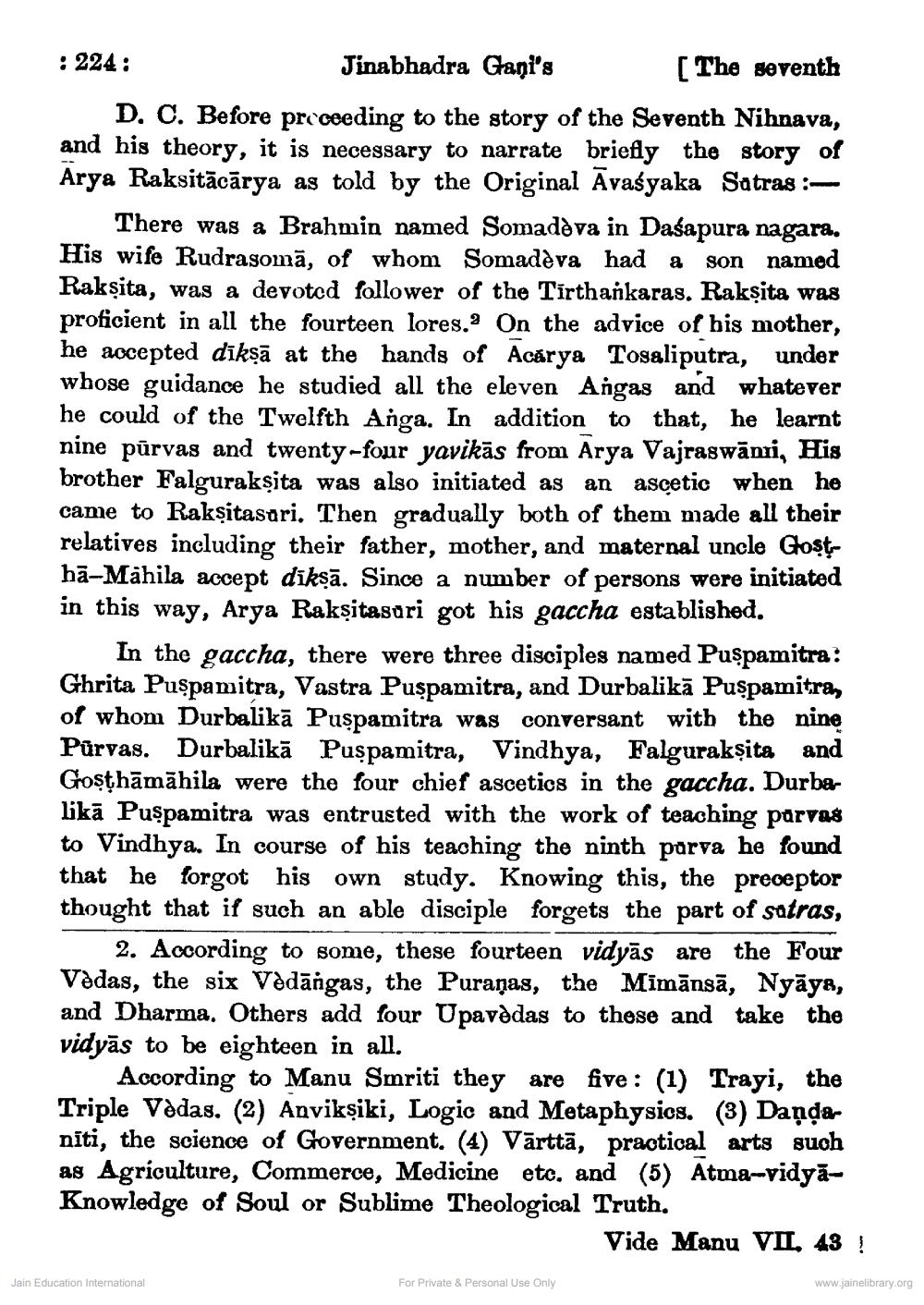________________
: 224 : Jinabhadra Gani's
[The seventh D, C. Before proceeding to the story of the Seventh Nihnava, and his theory, it is necessary to narrate briefly the story of Arya Raksitācārya as told by the Original Āvaśyaka Satras :
There was a Brahmin named Somadova in Dasapura nagara. His wife Rudrasomā, of whom Somadèva had a son named Rakṣita, was a devoted follower of the Tirthankaras. Raksita was proficient in all the fourteen lores. On the advice of his mother, he accepted dīkņā at the hands of Acărya Tosaliputra, under whose guidance he studied all the eleven Angas and whatever he could of the Twelfth Anga. In addition to that, he learnt nine pūrvas and twenty-four yavikās from Arya Vajraswāni, His brother Falgurakṣita was also initiated as an ascetic when he came to Rakṣitasari. Then gradually both of them made all their relatives including their father, mother, and maternal uncle Gosthā-Mahila accept dikşā. Since a number of persons were initiated in this way, Arya Rakṣitasuri got his gaccha established.
In the gaccha, there were three disciples named Puşpamitra: Ghrita Puşpamitra, Vastra Puşpamitra, and Durbalikā Puspamitra, of whom Durbalikā Puşpamitra was conversant with the nine Purvas. Durbalikā Puspamitra, Vindhya, Falgurakṣita and Gosthāmāhila were the four chief ascetics in the gaccha. Durba likā Puspamitra was entrusted with the work of teaching parvas to Vindhya. In course of his teaching the ninth parva he found that he forgot his own study. Knowing this, the preceptor thought that if such an able disciple forgets the part of satras,
2. According to some, these fourteen vidyās are the Four Vedas, the six Vedāngas, the Puranas, the Mimānsā, Nyāya, and Dharma. Others add four Upavėdas to these and take the vidyās to be eighteen in all.
According to Manu Smriti they are five: (1) Trayi, the Triple Vedas. (2) Anvikșiki, Logic and Metaphysics. (3) Daņdanīti, the science of Government. (4) Vārttā, practical arts such as Agriculture, Commerce, Medicine etc. and (5) Atma-vidyāKnowledge of Soul or Sublime Theological Truth.
Vide Manu VIL. 43 !
Jain Education International
For Private & Personal Use Only
www.jainelibrary.org




